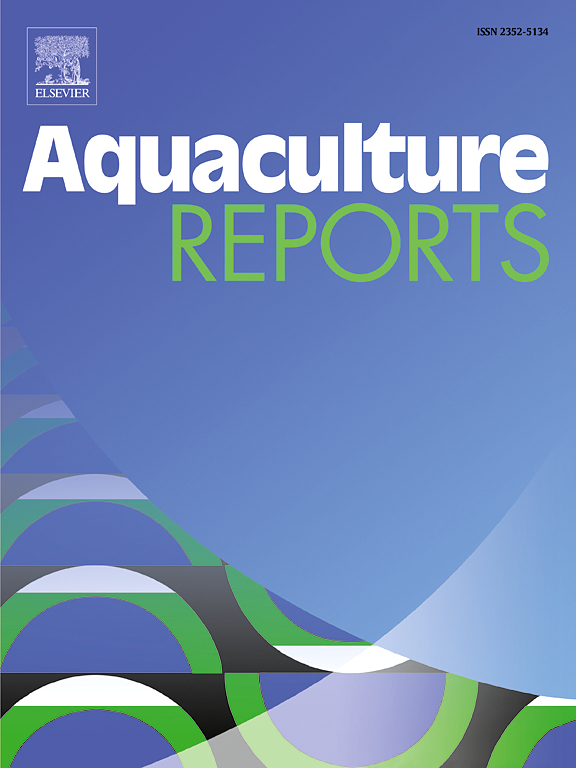Effectiveness of Lignocellulose Nanofibers (LNCFS) for removing nitrite, nitrate, and phosphate from Gamishan wastewater
IF 3.2
2区 农林科学
Q1 FISHERIES
引用次数: 0
Abstract
This study investigates the effectiveness of Lignocellulose Nanofibers (LNCFs) as a sustainable adsorbent for the removal of nitrite, nitrate, and phosphate from aquaculture wastewater, specifically focusing on fish farms in Gamishan. We optimized several key parameters, including pH, contact time, temperature, and adsorbent dosage, to determine the optimal conditions for pollutant removal. The results indicate that the highest removal efficiencies were achieved at a pH level of 6.5, with a contact time of 67 minutes, a temperature of 30 ○C, and an adsorbent dosage of 400 mg. Specifically, the removal rates were found to be 93 % for nitrate, 95 % for nitrite, and 96 % for phosphate. These findings demonstrate that LNCFs are not only effective in reducing these pollutants but also possess significant potential as a sustainable solution for wastewater treatment in aquaculture systems. The study emphasizes the critical role of optimizing operational parameters to maximize pollutant adsorption. Furthermore, the successful application of LNCFs in aquaculture practices could enhance environmental sustainability by promoting healthier aquatic ecosystems and effectively addressing the challenges posed by nutrient loading in water bodies. This research lays the groundwork for future investigations into the broader applicability of LNCFs in various wastewater treatment contexts, suggesting that their integration into aquaculture practices could lead to substantial improvements in water quality management and ecosystem health.
求助全文
约1分钟内获得全文
求助全文
来源期刊

Aquaculture Reports
Agricultural and Biological Sciences-Animal Science and Zoology
CiteScore
5.90
自引率
8.10%
发文量
469
审稿时长
77 days
期刊介绍:
Aquaculture Reports will publish original research papers and reviews documenting outstanding science with a regional context and focus, answering the need for high quality information on novel species, systems and regions in emerging areas of aquaculture research and development, such as integrated multi-trophic aquaculture, urban aquaculture, ornamental, unfed aquaculture, offshore aquaculture and others. Papers having industry research as priority and encompassing product development research or current industry practice are encouraged.
 求助内容:
求助内容: 应助结果提醒方式:
应助结果提醒方式:


